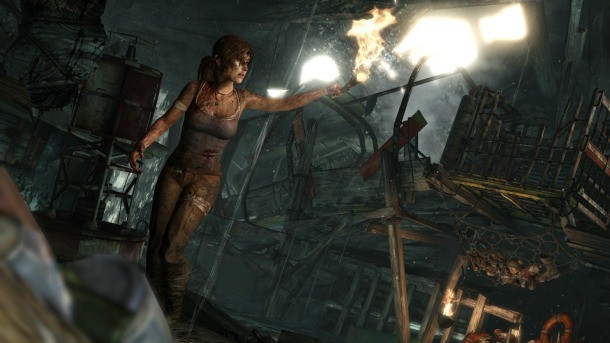Subscribe now to get the printed magazine
When Little Details Make A Big Difference

When my fellow interns and I first got our hands on Grand Theft Auto V, we decided to explore Los Santos together. As soon as Isaac had control of main character Franklin Clinton, he sprinted and jumped into the side of a building. The results were hilarious; Franklin smacked violently against the wall and flopped onto the ground. I had become accustomed to seeing characters jumping at walls as if nothing were there, resulting in a standard jump animation that goes nowhere. So I didn’t expect Franklin to splatter against the wall, even though it made complete sense. It’s not a feature that Rockstar flaunted, but this and many other tiny details add up to make GTA V immersive.
Developers have been striving for immersion by improving graphics, motion-capture technology, and voice acting. While these steps certainly help, it’s often the little things that make me forget I’m playing a game. Even if players don’t always notice or stop to appreciate them, they do improve the experience. Here are some of the ways that attention to detail makes games better.

Nonessential Animation
With the spread and improvement of motion capture, animation is better than it has ever been – Infinity Ward even motion-captured a dog for Call of Duty: Ghosts. But nonessential animations are equally as important; often it’s the little behaviors that characters do that trick us into believing that they are real.
In L.A. Noire, for example, when Cole Phelps drives a convertible too fast and hits a jump, his hat flies off. Go back to where it landed and he picks it up and places it back on his head. In BioShock Infinite, Elizabeth often occupies herself during quiet moments by peeking over shelves, rummaging through desks, or just leaning against a wall. These extra animations aren’t necessary, but they make Elizabeth feel more like a real person and, as a result, allow the player to care about her as if she were a real person.

Changing Character Models
Remember in Transformers: Revenge of the Fallen when Megan Fox ran away from giant robots through a desert and somehow didn’t get any dirt on herself? That was crazy. It is absurd in movies and should be in games as well. As technology improves, developers are able to make more detailed character models. However, adding polygons only goes so far towards simulating realism. Character models should be influenced by what’s happening.
Prince of Persia: Sands of Time, Batman: Arkham Asylum, and Tomb Raider all have main characters that physically change as the story progresses. It just makes sense that, after fighting to survive for days on a remote island, Lara Croft looks scarred and beaten by the end. Character models should also change even if it’s not important to the story. In Uncharted 2, when the player performs an action roll in the snow, Nathan Drake gets snow on his clothes and hair.

Believable Environment
Many gamers have likely played a recent game that has boring environments and reuses the same assets in numerous areas. Budget and technological constraints can sometimes be blamed, but not always. There are many small touches that can help make environments feel lived-in and authentic. Hideo Kojima and Konami individually designed each desk in the first Metal Gear Solid in order to create a world that feels real. That was in 1998.
The original Portal did not have a huge budget, but was still able to create environments that felt like they could be real. The game did this by showing evidence that other people had been in the test chambers before Chell. In his hidden dens, previous test subject Doug Rattmann leaves behind writing on walls, pictures of cakes and the companion cube, cans of bean, and water jugs. The famous line “The cake is a lie” is even found written in a den and not actually spoken by any character. These small nooks in the environments make it feel like the world of Portal exists even when the player’s not around.

Context-Sensitive Dialogue
It can be easy to not notice voice acting unless a game gets it really right or shockingly wrong. Generally, the latter does not happen often. Efforts by developers have made today’s voice acting better than it has ever been. They can go even further by including more context-sensitive dialogue.
In Mass Effect, players can take different combinations of followers with them, which result in different conversations unfolding in the numerous (and otherwise boring) elevator rides. It’s fun to see these characters, who primarily talked to Shepard, interacting with each other instead. While these conversations weren’t vital to the story, they did make the characters feel real. They no longer seemed like robots that only talked to Shepard; they were living beings that had other relationships.
As technology and the art of video games move forward, there may soon be no excuse for developers to ignore these small details. When they are included, they can easily be brushed off as no big deal. But imagine if you played Portal again and there were no dens, or if Elizabeth’s search animations disappeared from Bioshock Infinite. Wouldn’t you notice right away? When enough games pay attention to the little things, the ones that don’t will quickly start to stand out.









